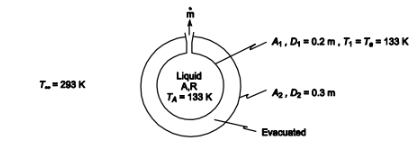A wire of resistivity ? must be replaced in a circuit by a wire of the same material but 4 times as long. If, however, the resistance of the new wire is to be the same as the resistance of the original wire, the diameter of the new wire must be
A) the same as the diameter of the original wire.
B) 1/2 the diameter of the original wire.
C) 1/4 the diameter of the original wire.
D) 2 times the diameter of the original wire.
E) 4 times the diameter of the original wire.
Answer: D
You might also like to view...
To observe a visual binary, we must measure radial velocities
a. True b. False Indicate whether the statement is true or false
A charged particle (mass = M, charge = Q > 0) moves in a region of space where the magnetic field has a constant magnitude of B and a downward direction. What is the magnetic force on the particle at an instant when it is moving horizontally toward the north with a speed V?
a. QVB toward the east b. Zero c. QVB toward the west d. QVB upward e. QVB toward the south
A capacitor consisting of two parallel plates separated by 2.0 cm has a potential of 40 V on the top plate and a potential of 0 V on the bottom plate. The electric field in the middle is
A. 80 N/C, upward. B. 2000 N/C, downward. C. 20 N/C, upward. D. 40 N/C, downward.
Two concentric spheres 0.2 m and 0.3-m in diameter, with the space between them evacuated, are to be used to store liquid air (133 K). If the surfaces of the spheres have been flashed with aluminum and the liquid air has a talent heat of vaporization of 209 kJ/kg, determine the number of kilograms of liquid air evaporated per hour.
GIVEN
? Two concentric spheres with the space between them evacuated and liquid air in the inner sphere
? Diameters
? D1 = 0.2 m
? D2 = 0.3 m
? Liquid air temperature (Ta) = 133 K
? Room temperature (T?) = 293 K
? Surfaces of the spheres have been flashed with aluminum
? Heat of vaporization of liquid air (hfg) = 209 kJ/kg = 209,000 J/kg
FIND
? The number of kilograms of liquid air evaporated per hour ( m )
ASSUMPTIONS
? Steady state
? Convective thermal resistance between the liquid air and interior sphere is negligible
? Thermal resistance of the sphere walls is negligible
? Natural convection on the exterior is negligible
? The room behaves as a blackbody enclosure
? The thickness of the sphere walls in negligible
SKETCH

PROPERTIES AND CONSTANTS
From Appendix 1, Table 5, the Stephan-Boltzmann constant

From Table 11.3, the hemispherical emissivity of the spheres will be approximated by that for
oxidized aluminum at 310 K: ? ? = ??1 ???2 = 0.11